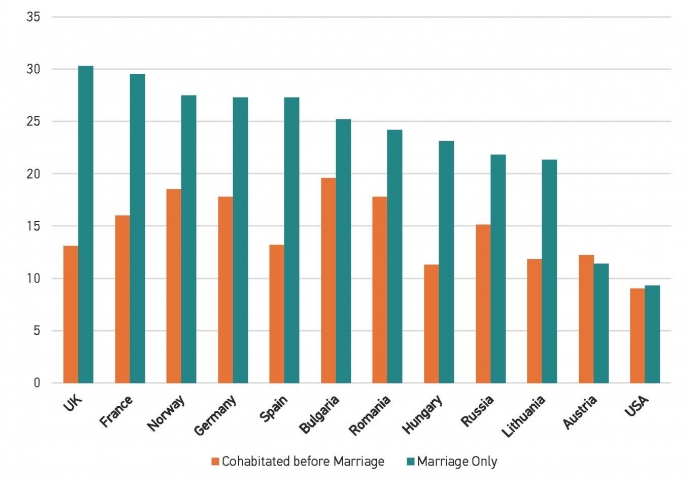GGP at a Glance No. 24 / October 2015
Download ggp_at_a_glance_024.pdf
Couples living together before marriage has become increasingly common over the past few decades. This raises the question of whether marriages preceded by cohabitation are more or less stable and enduring as marriages in which the couple have not previously lived together. Some argue that cohabitation lessens people’s commitment to partnership and thus increases their risk of divorce, while others believe that a cohabitation phase before marriage (as a trial marriage) would strengthen marital stability. In the United States, data suggest that the effect of cohabitation on marriage is at best neutral; however, in European countries, the effect of cohabitation on marital stability varies markedly, according to a study covering the last decade of the twentieth century (Liefbroer and Dourleijn, 2006). Figure 1 indicates just how much union stability varies across countries for both those who have cohabited prior to marriage and those who have not. The GGS enables us to examine whether this pattern has changed over time or differs across groups within society.
Mean duration in years of heterosexual 21-79 year old individuals first union which was a cohabiting relationship followed by marriage or a marriage not preceded by cohabitation
